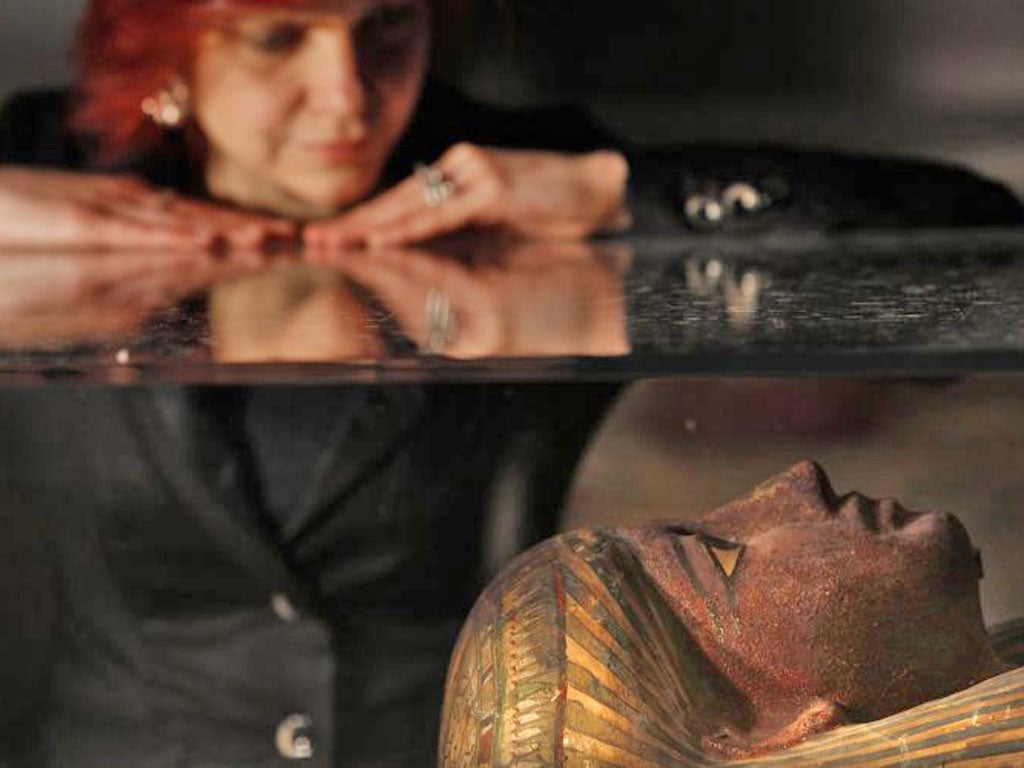Fascinating Mummies, National Museum of Scotland, Edinburgh
The wonders of ancient science – it's amazing what you can learn from a cat scan ...

Your support helps us to tell the story
From reproductive rights to climate change to Big Tech, The Independent is on the ground when the story is developing. Whether it's investigating the financials of Elon Musk's pro-Trump PAC or producing our latest documentary, 'The A Word', which shines a light on the American women fighting for reproductive rights, we know how important it is to parse out the facts from the messaging.
At such a critical moment in US history, we need reporters on the ground. Your donation allows us to keep sending journalists to speak to both sides of the story.
The Independent is trusted by Americans across the entire political spectrum. And unlike many other quality news outlets, we choose not to lock Americans out of our reporting and analysis with paywalls. We believe quality journalism should be available to everyone, paid for by those who can afford it.
Your support makes all the difference.Dignity in death, or at least the right for a corpse to moulder in peace, is a given in our time. The church no longer divvies up the remains of saints. Graveyards are sacrosanct, more or less. Even 2,000-year-old Egyptian mummies can rest undisturbed, now that X-rays and CT scans can see beneath their wrappings.
For to unwrap a mummy is to destroy it. And the most exciting discovery of Fascinating Mummies, the first major show in the National Museum of Scotland's splendidly refurbished galleries, is the speed at which non-invasive investigative techniques are developing. Crucial evidence, such as the contents of a papyrus document wrapped within the bandaging of a preserved corpse, is likely to be readable before the year is out. A several-thousand-year-old guidebook to the underworld will see the light, and no particle will have been disturbed in the process.
The point of this exhibition, then, is not to gawp at shrivelled human remains. Nor is it to marvel at ancient treasure trove. There is little burial jewellery on display and no gilded masks you'd describe as gorgeous, for the tombs that yielded these items were not the tombs of kings. These mummies, drawn from the Scottish museum's own collection and that of the museum of Leiden, in Holland, are not even all of high-ranking Egyptians. One mummy case, poignantly only a couple of feet long, was made for the deceased child of a craftsman. The rich had to pay for safe passage to the next life, but the artisans they employed looked after their own.
The thrust of the show, designed to give the visitor the impression of wandering through a temple, is to explain the practice of mummification, the culture that inspired it, and the methods by which we are now able to find out more. Every item in the collection has been subjected to state-of-the-art scanning.
And this has sprung surprises. In a section about sacred animals are displayed a number of non-human mummies: a cat (a beige linen salami with stuck-on linen pointy ears), a small crocodile (a plain beige lozenge) and a "baboon" – discovered, on the CT scan, to contain bits of random birds. From 600-100BC, mummifying animals was a boom industry. Millions of creatures were raised for the purpose, to be sold to pilgrims as offerings – an ibis to the god of wisdom, and so on. An X-ray of a cat mummy shows where its neck was broken, almost certainly for this purpose. So much for the sanctity of cats.
The feline theme carries over into one of the excellent hands-on exhibits, a computer game which leads you through the preserving process using a graphic of a dead mog. "Make an incision in the cat's tummy" goes the instruction. "Now remove the organs ...".
An adult version (not quite so much fun) has you standing at a mortuary table piecing together a giant jigsaw of a human corpse. There is no shying away from the gruesomeness of the process. The canopic jars used for storing individual organs can be beautiful, but the crochet hook for drawing putrified brain matter through the nostrils most definitely is not.
The climax of the exhibition is an entire room devoted to a priest called Ankhhor, who lived and died in Thebes in the seventh century BC. That much is known from his three coffins and sarcophagus, stacked one inside the other like Russian dolls. Much more, though, has been disclosed by scanning: his anatomy, his age, the state of his teeth, and the process of mummification, including the type and location of various amulets tucked into his wrappings. A dramatic reconstruction of Ankhhor's funeral on film might have been an imaginative step too far, but there is no false note in this absorbing and hugely educative show: an object lesson in how to bring the dead to life.
To 27 May (0300 123 6789)
Art Choice
Piet Mondrian may be the better known, but an exhibition at London's Courtauld Gallery placing the work of his British friend Ben Nicholson alongside his reveals much about the innovations of both Modernists (to 20 May). Lucian Freud's absorbing portraits are on display at the National Portrait Gallery; it's a popular show, so book ahead (to 27 May).
Join our commenting forum
Join thought-provoking conversations, follow other Independent readers and see their replies
Comments